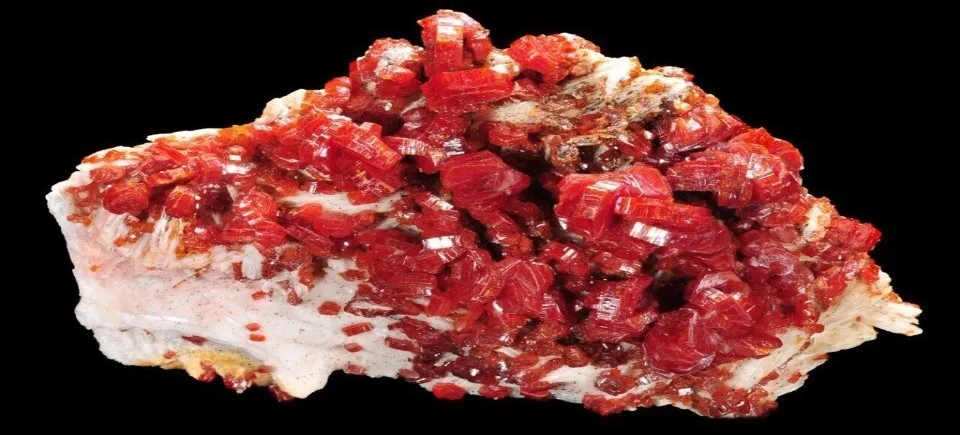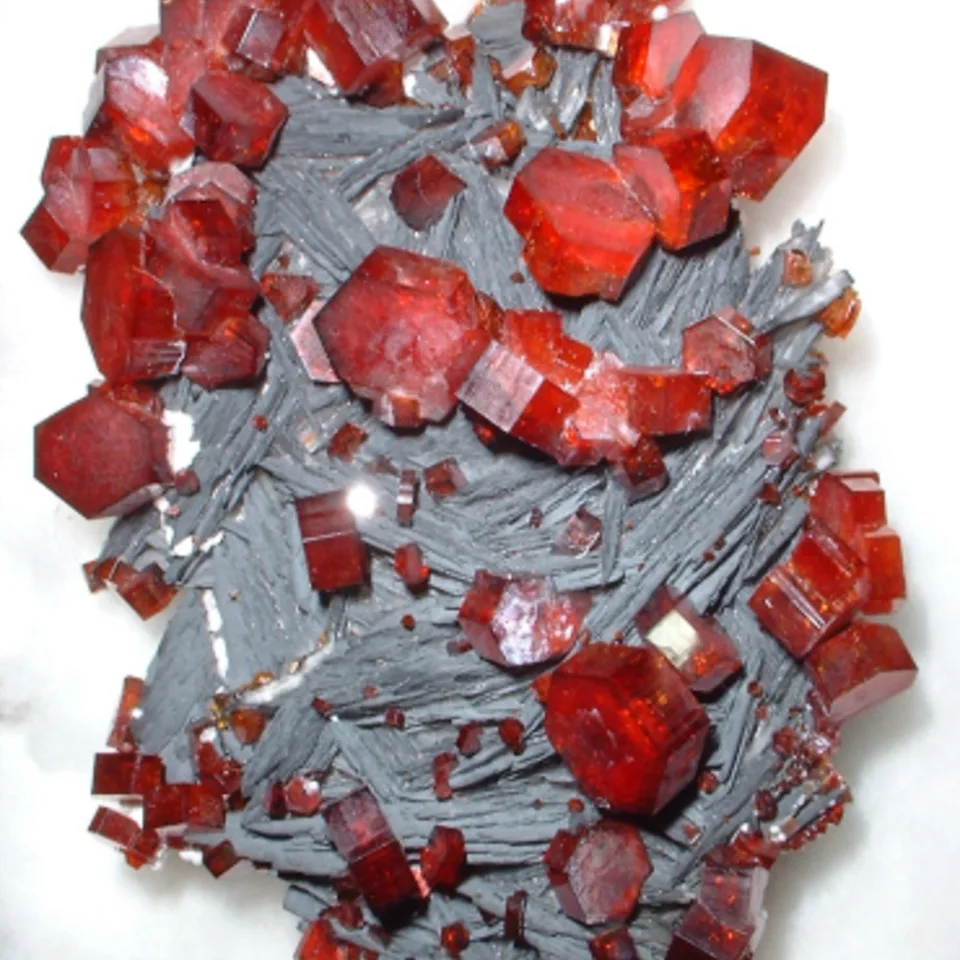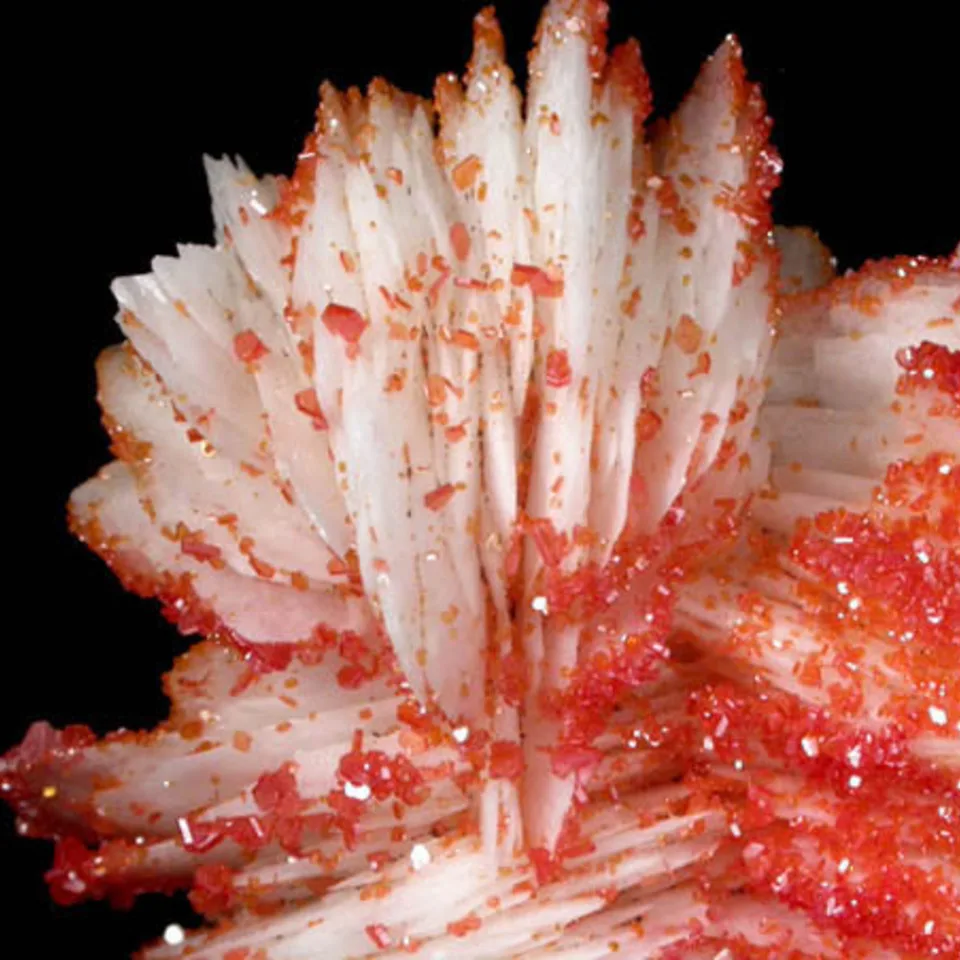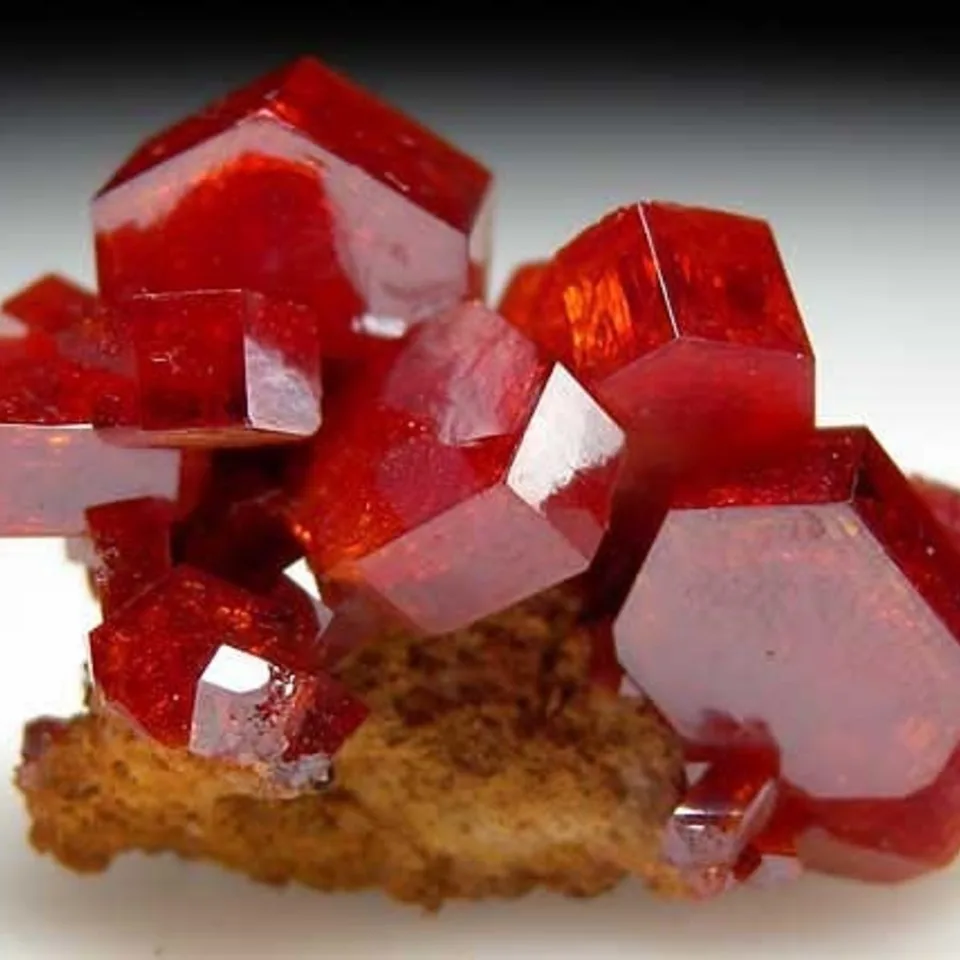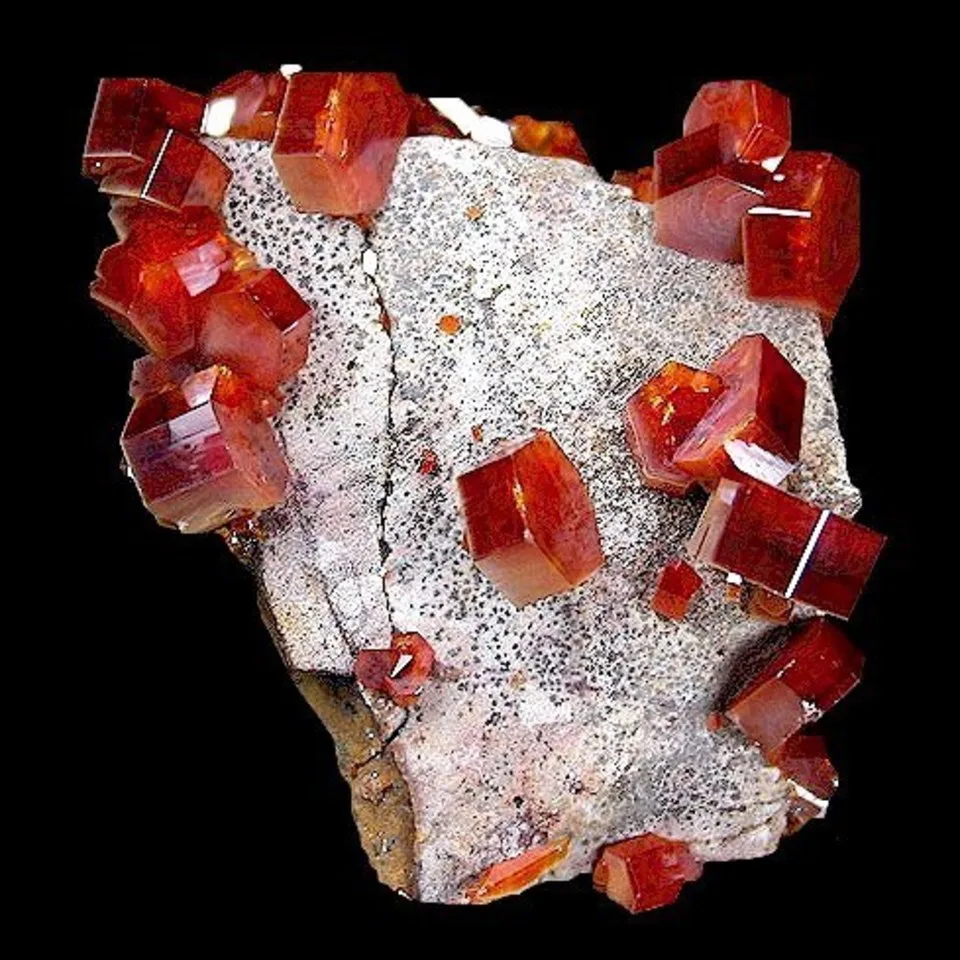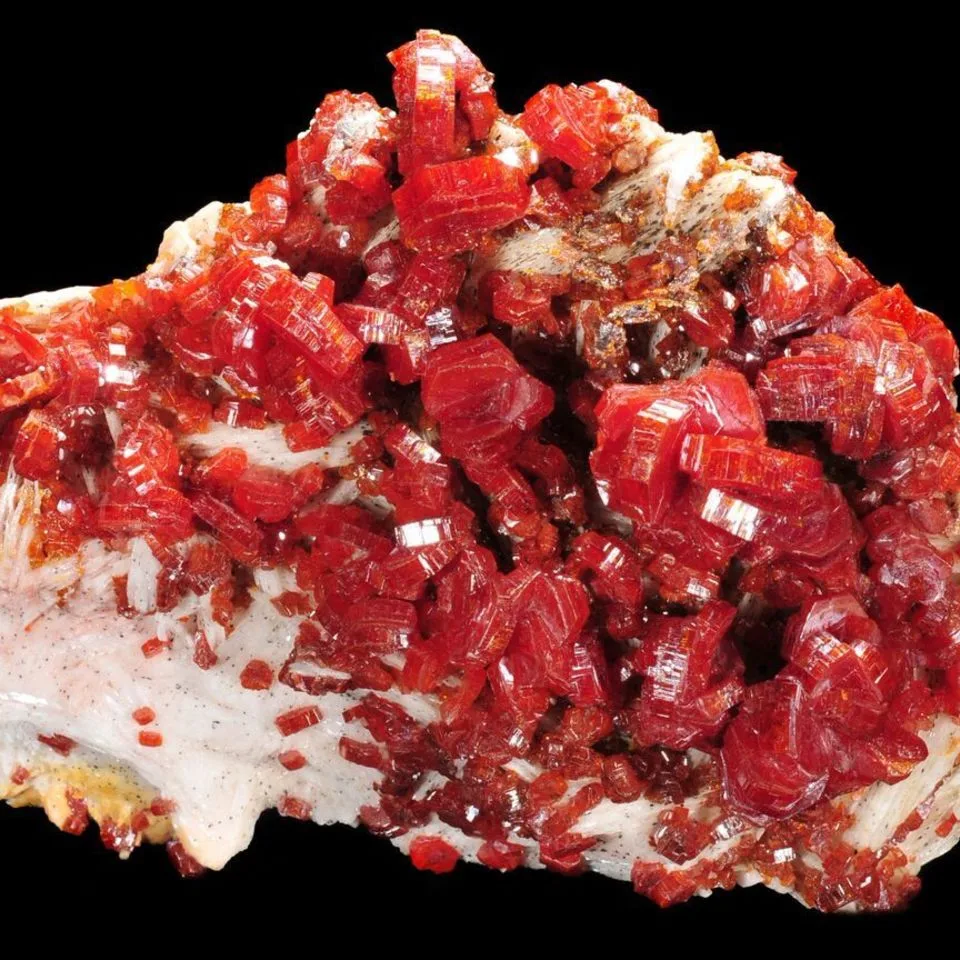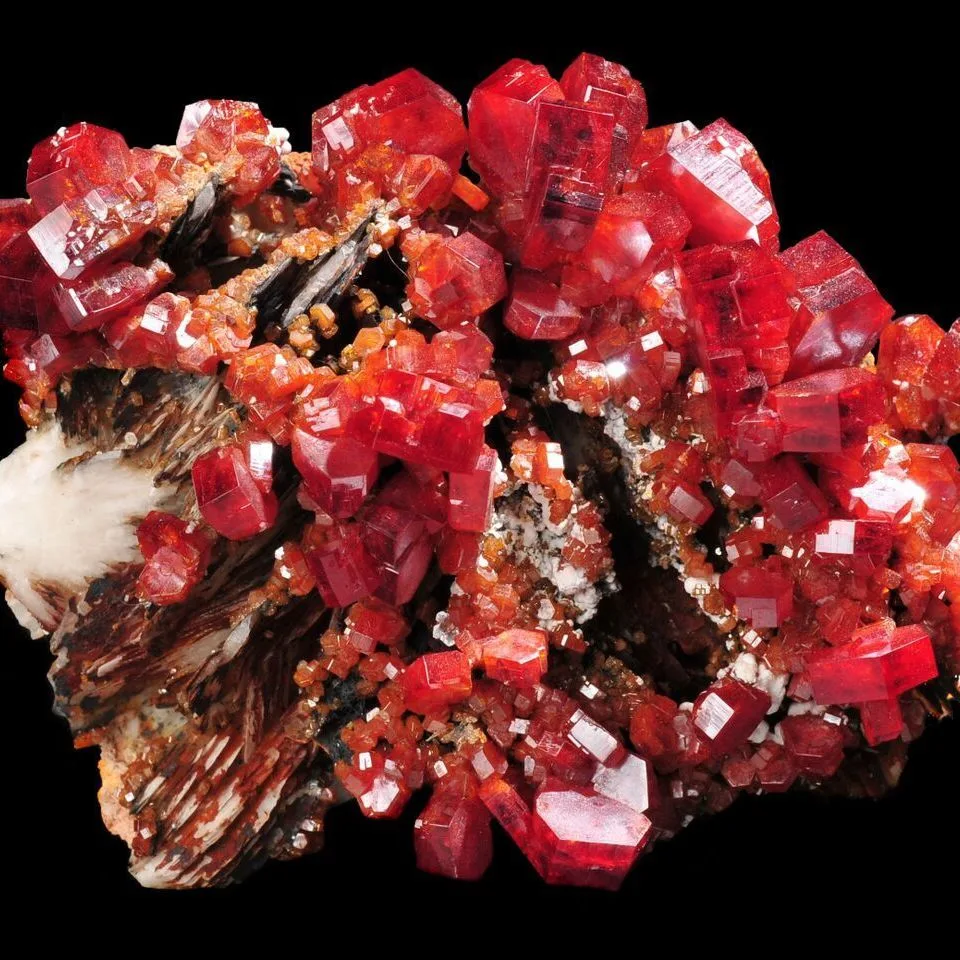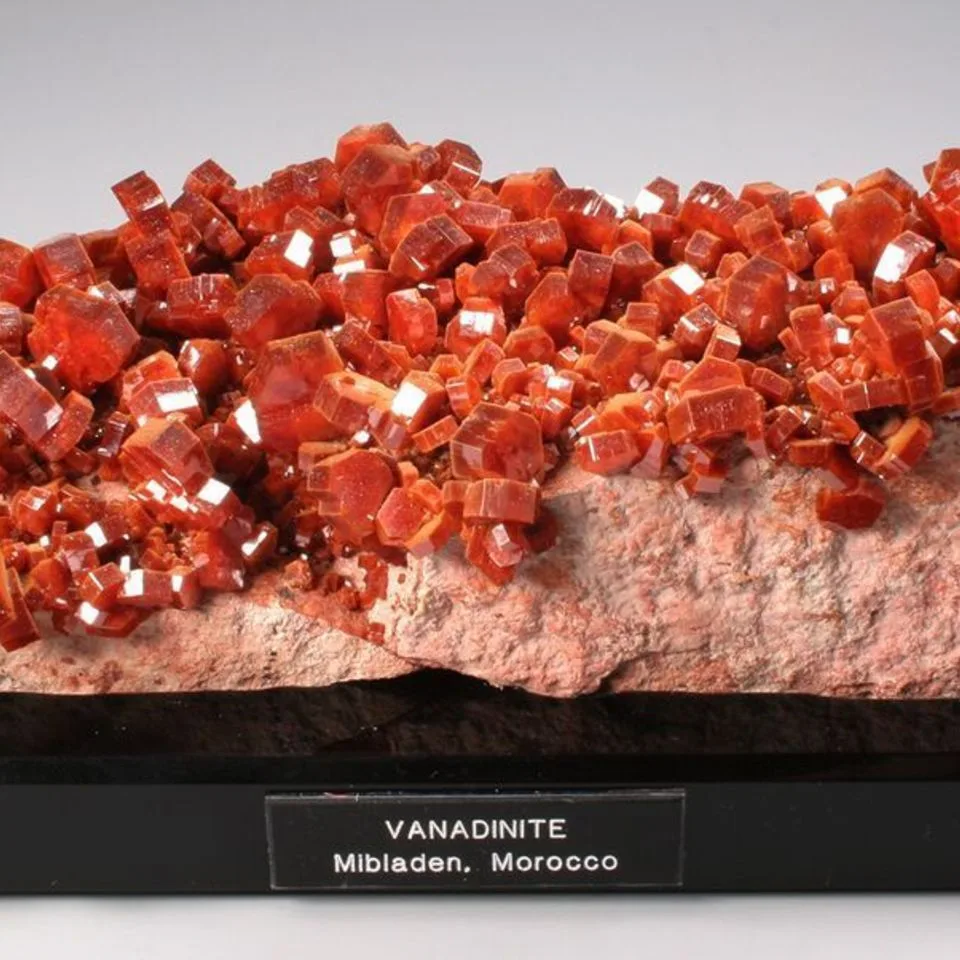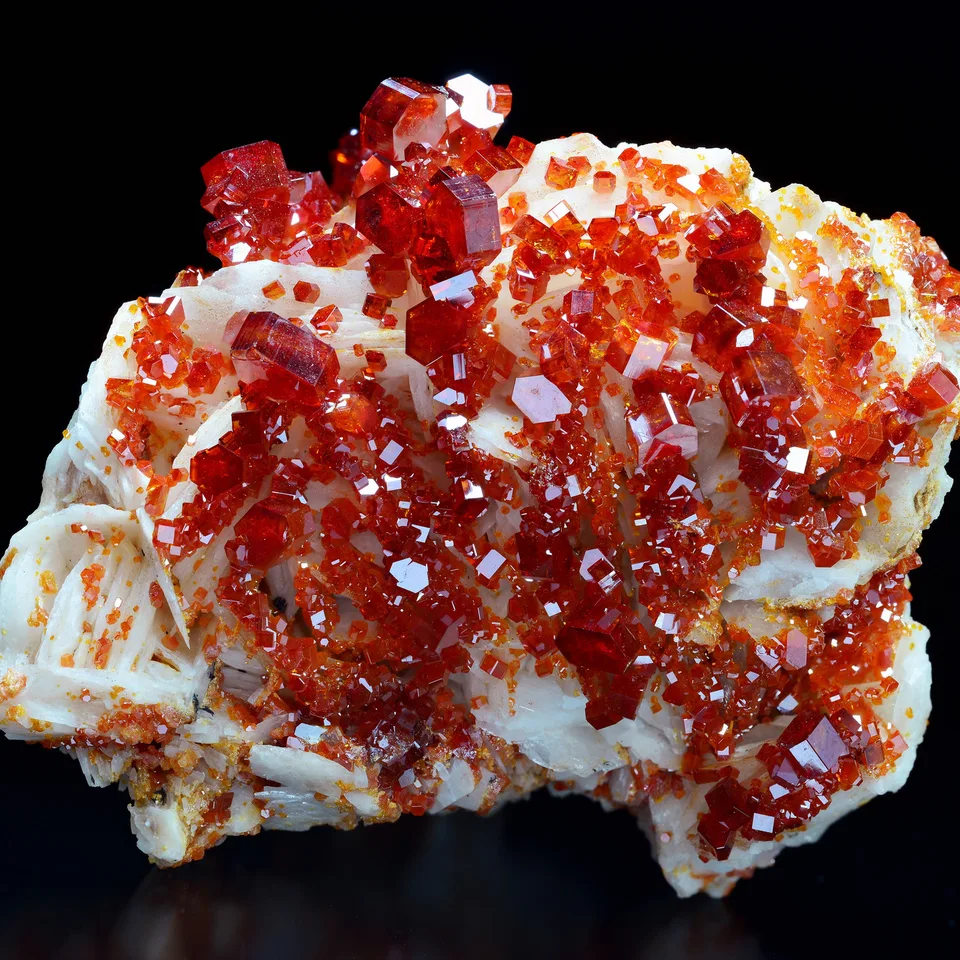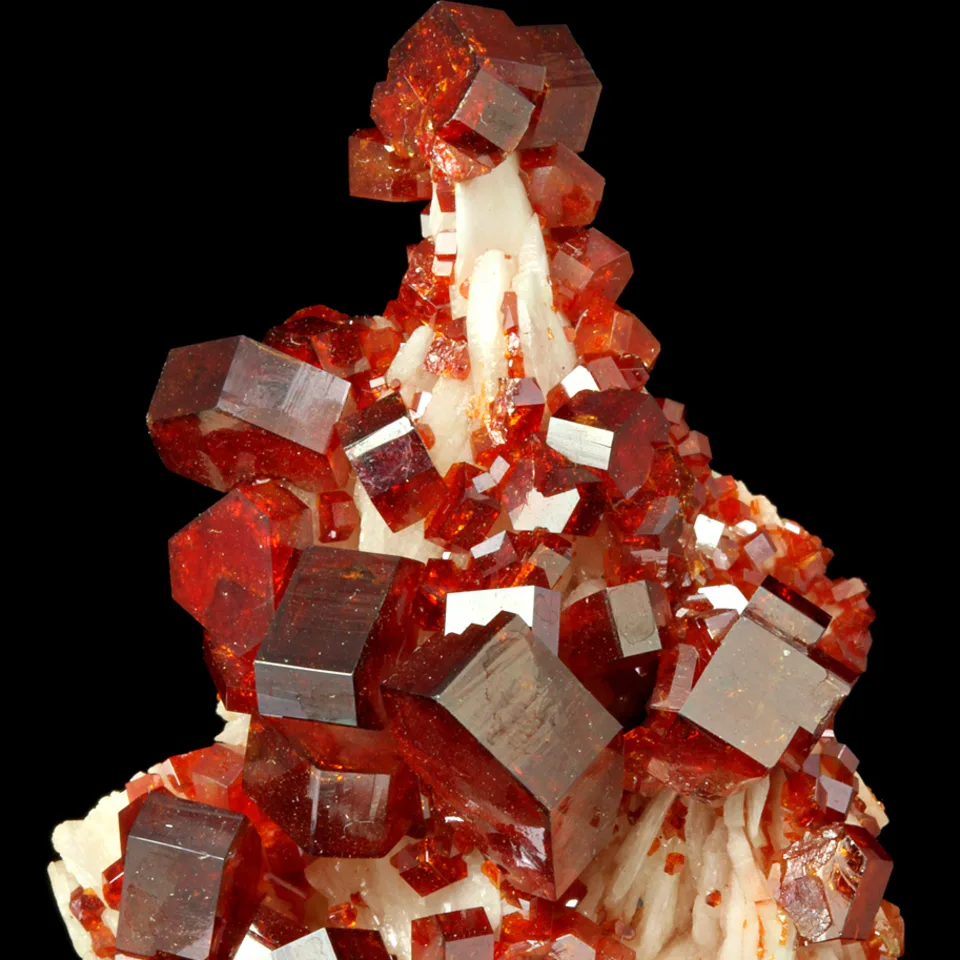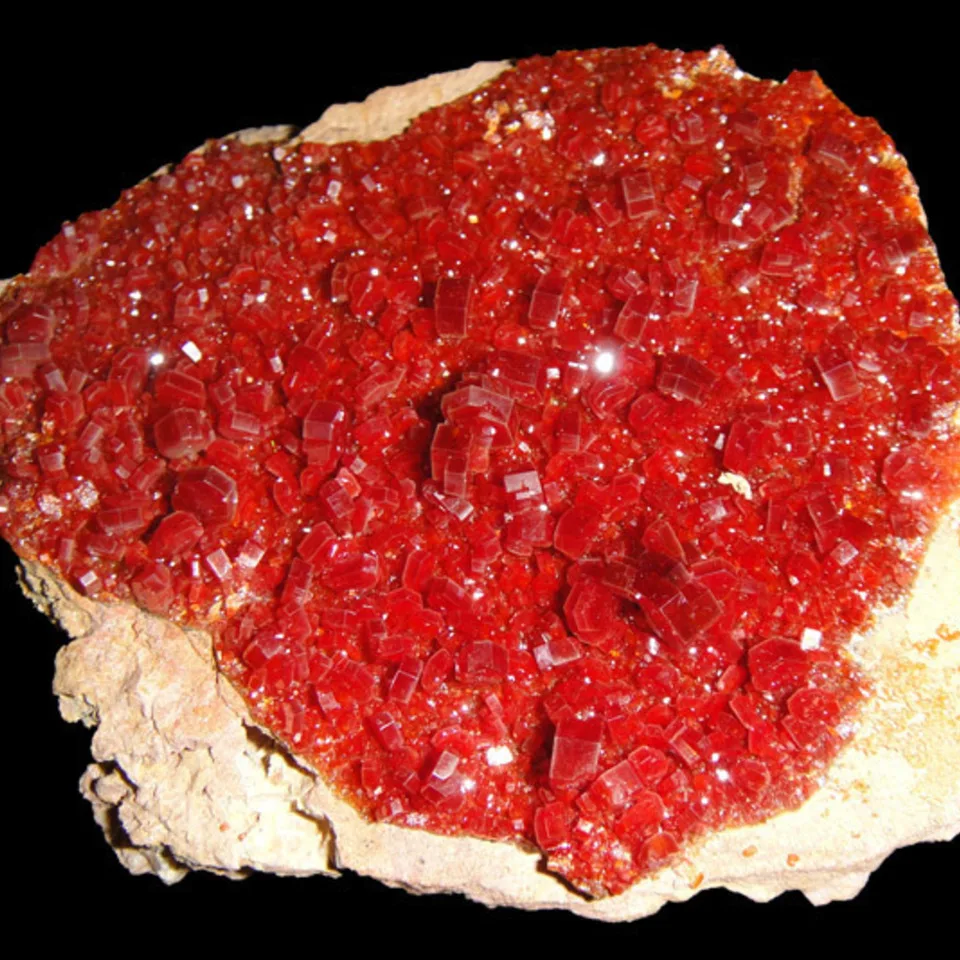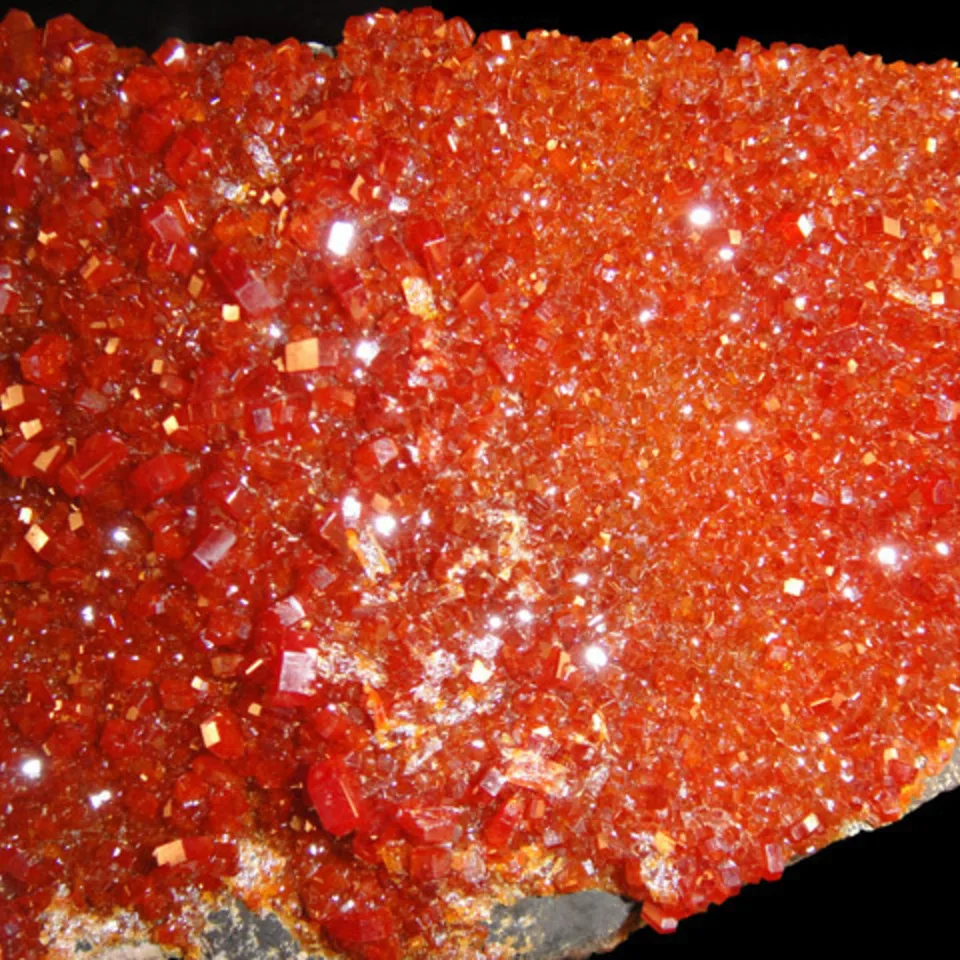Vanadinite
Vanadinite is a mineral belonging to the apatite group of phosphates, with the chemical formula Pb5(VO4)3Cl. It is one of the main industrial ores of the metal vanadium and a minor source of lead. A dense, brittle mineral, it is usually found in the form of red hexagonal crystals. It is an uncommon mineral, formed by the oxidation of lead ore deposits such as galena. First discovered in 1801 in Mexico, vanadinite deposits have since been unearthed in South America, Europe, Africa, and in other parts of North America.
Vanadinite is an uncommon mineral, only occurring as the result of chemical alterations to a pre-existing material. It is therefore known as a secondary mineral. It is found in arid climates and forms by oxidation of primary lead minerals. Vanadinite is especially found in association with the lead sulfide, galena. Other associated minerals include wulfenite, limonite, and barite.
Vanadinite occurs as a secondary mineral in the oxidized zone of lead-bearing deposits, the vanadium is leached from wall-rock silicates. Associated minerals include mimetite, pyromorphite, descloizite, mottramite, wulfenite, cerussite, anglesite, calcite, barite, and various iron oxide minerals.
Deposits of vanadinite are found worldwide including Austria, Spain, Scotland, the Ural Mountains, South Africa, Namibia, Morocco, Argentina, Mexico, and 4 states of the United States: Arizona, Colorado, New Mexico, and South Dakota.
Vanadinite deposits are found in over 400 mines across the world. Notable vanadinite mines include those at Mibladen and Touisset in Morocco; Tsumeb, Namibia; Cordoba, Argentina; and Sierra County, New Mexico, and Gila County, Arizona, in the United States.
